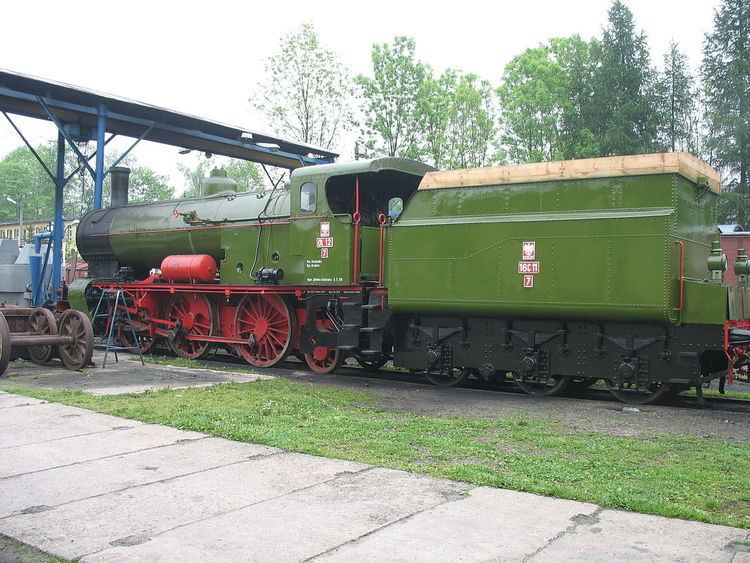Quantity 283 Wheel arrangement 2-6-2 | Year(s) of manufacture 1909–1916 Axle arrangement 1'C1' h2v | |
 | ||
Number(s) kkStB 429.01–57
kkStB 429.100–225
SB 429.01–06
BBÖ 429.03–57 (with gaps)
BBÖ 429.103–224
ČSD 354.701–784
FS 688.001–002
JDŽ 106-001–002
PKP Ol12-1–45, 84
MÁV 323.907
DRB 35 301–346
ÖBB 35.242
ÖBB 135.312–346 (with gaps) Manufacturer StEG, Wr. Neustadt, Floridsdorf | ||
The steam locomotive class kkStB 429 was a class of passenger locomotive operated by the Imperial Austrian State Railways (Kaiserlich-königliche österreichische Staatsbahnen), kkStB.
As Wilhelm Schmidt's superheater went into series production, Karl Gölsdorf modified the Class 329 into the superheated variant 429. The smokebox was lengthened, the boiler barrel reduced accordingly, high-pressure cylinders were given piston valves, the low-pressure cylinders slide valves. The Lokomotivfabrik Floridsdorf, the Wiener Neustädter Lokomotivfabrik and the Lokomotivfabrik der StEG delivered 57 units (429.01–57) to the kkStB.
In spite of the small superheater area, problems arose with the slide valves on the low-pressure side. As a result, the following 126 engines were supplied with piston valves on both sides (429.100–225). At the same time a two-cylinder variant with piston valves was tried, of which in the end 197 units were procured by the kkStB (429.900–999 and 429.1900–1996).
The Austrian Southern Railway procured six compound locomotives (with piston valves), that were numbered 429.01–06.
The 429s were employed for all duties and with good coal generated up to 1,200 PS (883 kW; 1,184 hp). They were to be found in almost all parts of the Danube Monarchy.
After the First World War the former 429s became Class 354.7 with the ČSD, Class Ol12 in the PKP, Class 106 in the JDŽ, Class 688 in the FS and were also used by the Romanian State Railways retaining their original numbers. A total of 87 units (46 compound, 41 two-cylinder locomotives) remained in the BBÖ.
In 1939 the Deutsche Reichsbahn (DRB) reclassified the two-cylinder engines as 35 201–241 and the compounds as 35 301–346. During the course of the war, several locomotives from the ČSD and JDŽ ended up in the DRB. After the Second World War 46 two-cylinder machines were left in the ÖBB and became their Class 35, as well as 39 compound engines which became Class 135. The serial numbers were not changed from those allocated by the DRB.
ČSD Class 354.7
The ČSD in Czechoslovakia converted all its compound locomotives (27 of the first series, 57 of the second) into two-cylinder engines. Together with the 68 two-cylinder machines taken over, they therefore had over 152 examples of Class 354.7. With the exception of one engine, all the locomotives were give a second steam dome with a connecting pipe. The ČSD did not withdraw Class 354.7 engines from its fleet until 1967.
